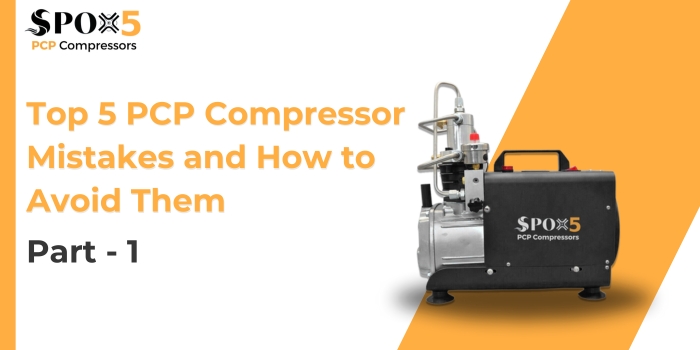PCP (progressing cavity) compressors are the workhorses of the compressed air world, powering everything from air rifles to industrial applications. But like any powerful tool, they require proper handling to ensure safety, efficiency, and longevity. Here, we explore the top 5 common mistakes with PCP compressors and provide solutions to keep your air source running smoothly.
Mistake #1: Ignoring the Manual
The Problem: Every PCP compressor model has its own specific capabilities and limitations outlined in the user manual. Ignoring these guidelines can lead to a world of trouble.
The Consequences: Skipping the manual can result in:
- Reduced Efficiency: Operating outside the recommended pressure range or using the wrong settings can strain the compressor and decrease its overall efficiency.
- Premature Wear and Tear: Pushing the compressor beyond its limits can accelerate wear on internal components, shortening its lifespan.
- Safety Hazards: Operating with improper procedures or exceeding pressure limits can increase the risk of accidents and injuries.
The Solution: Make the user manual your best friend. Familiarize yourself with:
- Recommended Pressure Range: Each model has a specific pressure range it’s designed to handle. Always operate within these limits.
- Compatible Fluids: The manual will specify the types of fluids the compressor can handle safely. Using incompatible fluids can damage internal components.
- Maintenance Schedule: The manufacturer recommends a specific maintenance schedule for oil changes, filter replacements, and inspections. Regular maintenance ensures optimal performance and longevity.
Mistake #2: Neglecting System Design
Het probleem: Als we ons alleen richten op de compressor zelf en het hele systeemontwerp verwaarlozen, kan dat leiden tot prestatieproblemen.
The Consequences: A poorly designed system can put undue stress on your PCP compressor and hinder its ability to perform efficiently:
- Improper Pipe Sizing: Undersized pipes create excessive back pressure, reducing the compressor’s effective PSI output and potentially leading to overheating.
- Onjuiste filtratie: Als er geen goede filters voor de compressor worden gebruikt, kunnen er verontreinigingen in het systeem terechtkomen, waardoor er schade aan interne componenten kan ontstaan.
- Tegendruk van systeem negeren: Het negeren of niet beheren van tegendruk van nageschakelde apparatuur kan de capaciteit van de compressor om het gewenste debiet te leveren verminderen.
De oplossing: Houd bij het plannen van een PCP-compressorsysteem rekening met alle aspecten van het ontwerp:
- Pijpdiameter: Raadpleeg een gekwalificeerde technicus om de juiste leidingdiameter te bepalen op basis van het vereiste debiet en de drukval.
- Filtratie: Installeer geschikte filters bij de compressorinlaat om eventuele verontreinigingen uit de inkomende lucht of het inkomende gas te verwijderen.
- Tegendrukbeheer: Identificeer mogelijke bronnen van tegendruk stroomafwaarts en implementeer strategieën om deze te minimaliseren, zoals het gebruik van leidingen met een grotere diameter of het installeren van overdrukventielen.
Stay tuned for Parts 2 & 3 of this blog series, where we’ll explore additional mistakes to avoid and delve into proper maintenance practices for your SPOX5 PCP compressor!

